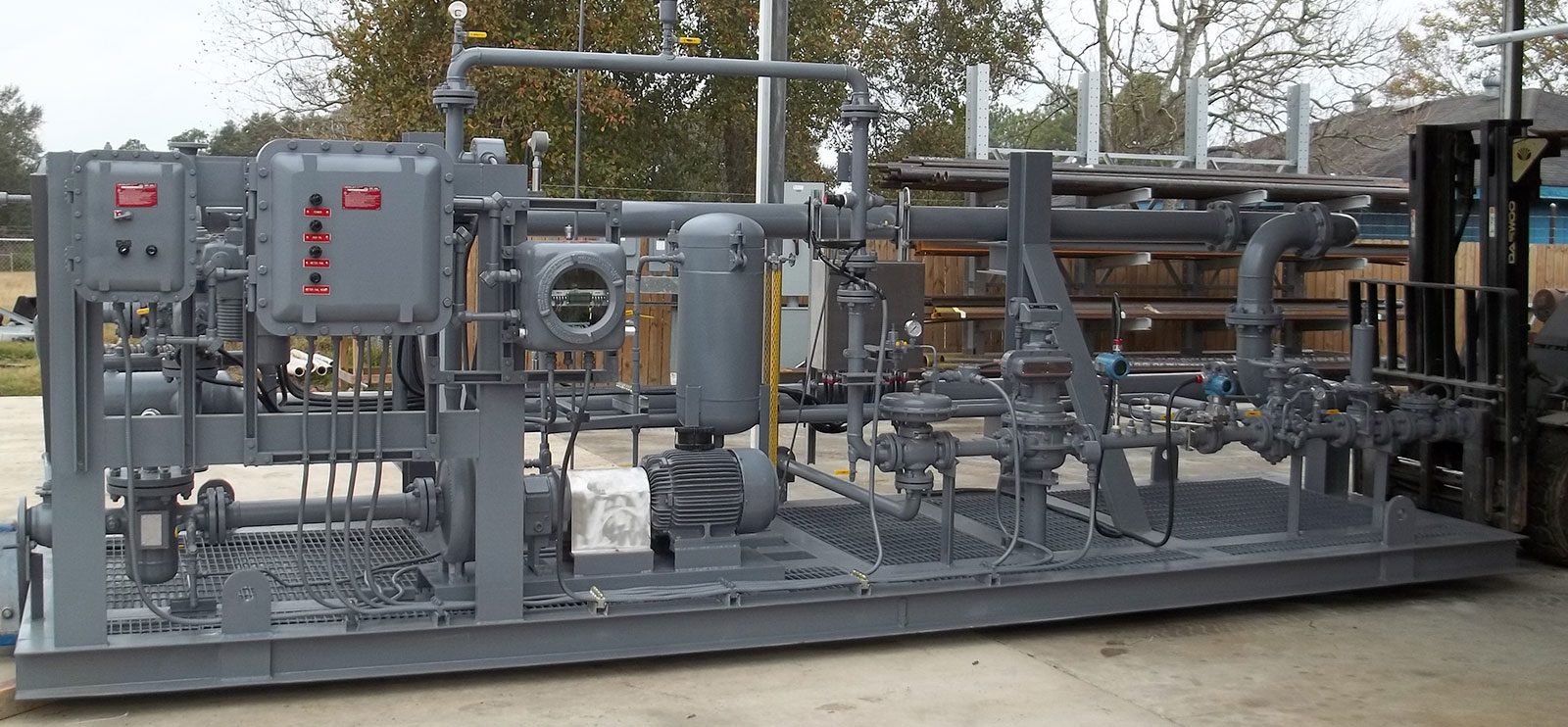LACT Units
OQ Measurement LACT Units
- Design
- Fabricate
- Deliver
- Maintenance
- Mechanical Diagnosis
- In-House Engineering & Design
- Turn-Key Process

A LACT Unit is a piece of oil and gas equipment used to sample and measure oil so it can be transferred from one company to another. A LACT Skid is another common term used for a LACT Unit.
What does LACT Stand For?
LACT stands for Lease Automatic Custody Transfer. The custody of the oil is usually transferred from an upstream oil and gas producer to a midstream oil and gas company for storage or transportation.
What Does a LACT Unit Do?
In a standard unit, a LACT unit pump sends oil from a storage tank into the unit. It’s sent through an air eliminator, which removes any gasses trapped in the stream.
A BS&W monitor (basic sediment and water) collects representative samples. These samples are used to measure the percentage of sediment and water (“S&W”) the stream contains.
If the sediment and water amounts are too high, a diverter will route the oil to a bad oil tank.
If the sediment and water amounts are acceptable, a valve will open and send the oil to a Coriolis meter.
The unit then feeds this good oil to an external tank, pipeline or truck.
LACT units may measure one or several well streams.
Why is a LACT Unit Important?
Some people refer to the LACT as the “cash register” of the oilfield, because producers use it to meter and calculate payments. But the LACT measures not just the quantity of the product being transferred but also its quality—the amount of sediment and water in the oil.
The advantage of these units is they can run unmanned. Their programming and communication capabilities mean the process can be monitored remotely.
Have Questions?
Contact us with any questions you may have about our products, services or LACT Units.
